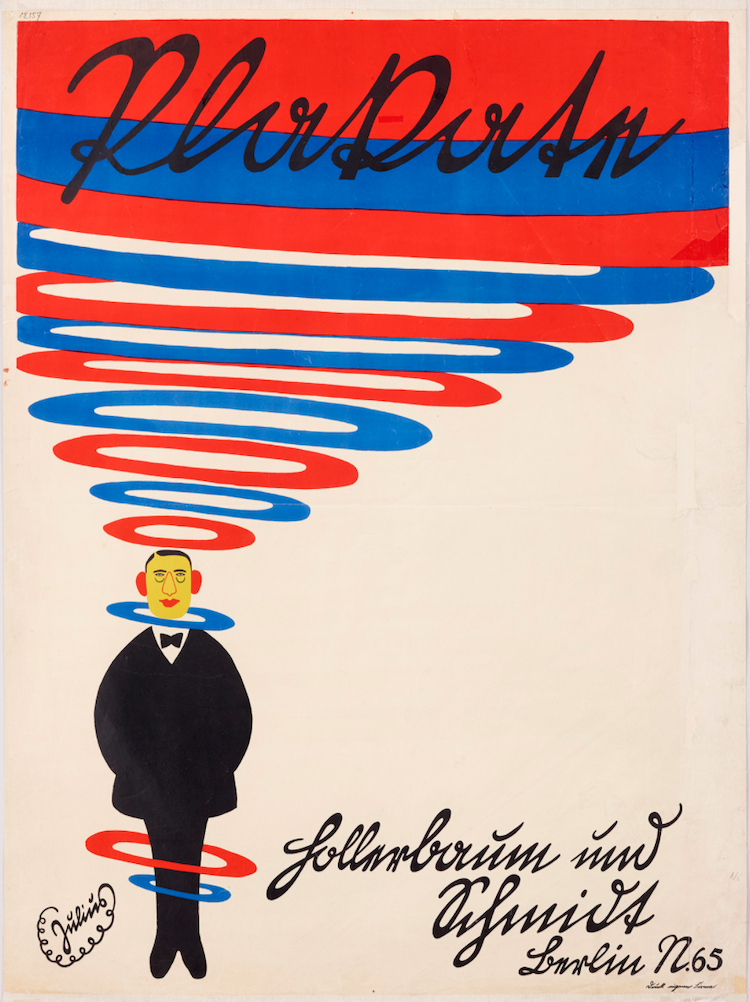
Drawn to America: Julius Klinger’s Poster Art
By Karen Etingin
Viennese-born Julius Klinger (1876-1942) innovated advertising posters, book and magazine illustrations, mass promotional campaigns, and brand development, and he had a single-minded approach to an International Graphic Language. He became well known in his Austrian homeland as well as in Germany by the outbreak of WWI via an artistic reputation built on the strength and range of his designs, which were characterized by graphic simplicity, eponymous typefaces and irony. An advocate of “Americanismus,” and the progressive attitudes towards modern business and media coming from across the Atlantic, Klinger understood the power of modern trademarks and logos and their ability to give identity to major businesses and manufacturers.
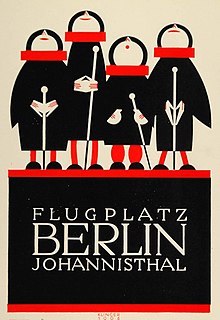
Flugplatz Johannisthal
Julius Klinger
The Wolfsonian–FIU, Miami Beach, FL, The Mitchell Wolfson, Jr. Collection
In 1912, Klinger, writing about the work of poster designers in the Monographien Deutscher Reklamekünstler (Monographs of German Advertising Artists), explained that: “We want to produce our work well and with purpose so that it not only unburdens our conscience but also fulfills its intended function as a part of life. We do not consider ourselves ‘divinely gifted’ artists. Rather, we want to participate in tasks with which life has presented us.” It was this desire to have art work in the service of business, and businessmen, which drew Klinger to America and the American way of doing business.

Plakate: Hollerbaum und Schmidt (Posters: Hollerbaum and Schmidt), 1910
Julius Klinger
The Wolfsonian–FIU, Miami Beach, FL, The Mitchell Wolfson, Jr. Collection
Klinger admired the directness and efficiency of the American model. Rather than being stuck with old ideas and advertising techniques, the Americans were changing and moving with new music (including jazz), new technologies (including advances in printing), and a new sense of purpose. It was all quite intoxicating for Klinger, and in 1921 he produced a portfolio he called Poster Art in Vienna aimed directly at the American market. Included with Klinger’s designs was the work of some of his favorite students, as well as advertisements for Klinger’s school and studio. The goal of the portfolio was to introduce Klinger’s work to an American audience, and hopefully have him travel to the country he had at that point only dreamed about.
Poster Art in Vienna highlighted Klinger’s instinctive understanding of branding, marketing, and what in modern terms could be called ‘corporate identity’ or iconographics – essentially using pictograms or diagrams in place of text to represent a product or an idea. The volume contained 40 designs, many produced by Klinger and others by his students, the so-called Viennese Group. Ostensibly issued concurrently in Vienna and Chicago, the portfolio was actually conceived, designed, and manufactured entirely in Austria. Poster Art in Vienna was the ultimate inside joke: it was the world of a marketing genius promoting himself and his students in a portfolio which was designed to show off his marketing skills for others.
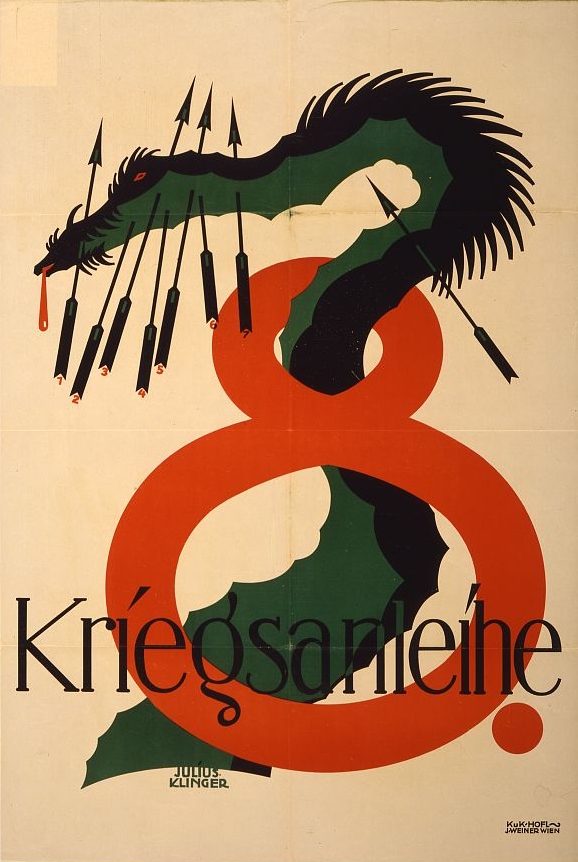
8. Kriegsanleihe (The 8th War Loan), 1918
Julius Klinger
The Wolfsonian–FIU, Miami Beach, FL, The Mitchell Wolfson, Jr. Collection
Klinger also worked on something he called the International Graphic Code: a language of icons and trademarks that would remain outside the sphere of language-controlled processes. He sought to create a graphic Esperanto: a ubiquitous code of visual phraseology that was universal, immediately comprehensible and like all of his work, simple and refined. During his lifetime the International Graphic Code failed to gain much traction, but a century later, its impact is undeniable. Today, global brands like IKEA have integrated this very basic form of graphic communication into instruction booklets that can be distributed without words – across the globe.

Ö Treffer Anleihe, 1933
Julius Klinger
While producing graphic design books on ornamentation and design, contributing illustrations to a variety of periodicals and teaching private students, Klinger also had a fulltime job at the Berlin printing house of Hollerbaum und Schmidt. There he had the opportunity to work with other graphic powerhouses like Lucien Bernhard, Ernst Deutsch, Julius Gipkens and Paul Scheurich – some of the greatest plakat (poster) designers ever.
An ardent Americanophile, Klinger came to the United States twice. First in late 1928, at the invitation of the of the advertising agency in charge of the General Motors campaign, and again in 1931 to teach at New York’s New School where he was billed as “Europe’s most prominent poster artist.”
In 1908, Klinger, looking beyond his own lifetime, wrote: “We cherish a presumptuous hope that perhaps in fifty or a hundred years, our works may stand as forceful cultural documents of how the salesman advertised his wares at the start of the twentieth century. And perhaps then our work will be more interesting than the many, many paintings that were created in this era.”

Hermanns & Froitzheim, 1911
Julius Klinger
Julius Klinger saw himself as a multi-talented, multi-disciplinary artist in the service of the market. His remarkable ability to look at a product and implicitly understand the best manner in which to market it made him one of the first “Mad Men” on the planet. He was a gifted, temperamental artist whose life and work straddled some of the most exciting, turbulent and troubling moments of the 19th and 20th centuries. His legacy of posters, typefaces, trademarks and speeches speaks to a dedication to design, graphic purity and a pride in his artistic, linguistic and geographic origins.
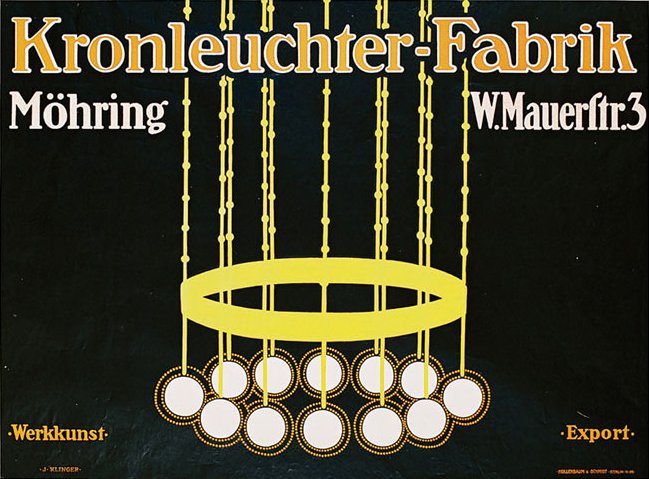
Kronleuchter-Fabrik Möhring (Möhring Chandelier Factory), 1909
Julius Klinger
The Wolfsonian–FIU, Miami Beach, FL, The Mitchell Wolfson, Jr. Collection
New York City’s Poster House Museum is the latest American venue to host the Julius Klinger: Posters for a Modern Age exhibition, a show dedicated to the art and life of one of the leading graphic artists of the modern age. Julius Klinger: Posters for a Modern Age comes to Poster House from The Wolfsonian–Florida International University in Miami Beach, FL, and is on view at Poster House in New York until August 15, 2021. For more information about the exhibition, click here.
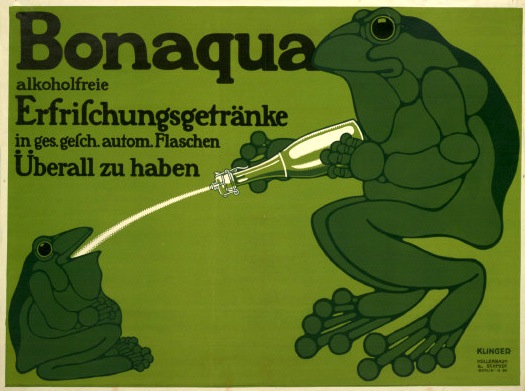
Bonaqua, 1909
Julius Klinger
The Wolfsonian–FIU, Miami Beach, FL, The Mitchell Wolfson, Jr. Collection
Author Biography
Karen Etingin is the owner of Galerie L’Affichiste, Montreal, and is a member of the internationally recognized International Vintage Poster Dealer Association. Her book, Beyond Poster Art in Vienna: The Life and Art of Julius Klinger, is available at Poster House and through her website.
Further Reading
Aynsley, Jeremy. Julius Klinger: Posters for a Modern Age. Miami Beach: The Wolfsonian-Florida International University, 2017.
Etingin, Karen. Beyond Poster Art in Vienna: The Life and Art of Julius Klinger. Montreal: L’Affichiste, 2016.
Image Credits
Images courtesy of The Wolfsonian–FIU, Miami Beach, FL, where noted, and Karen Etingin.
Published on Tuesday, June 1, 2021.
